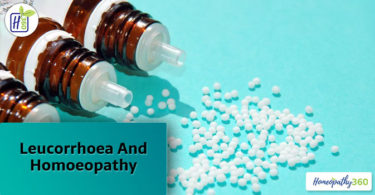ABSTRACT: This article is an attempt of explaining menstrual disorders with common causes along with indications of some rare homoeopathic remedies.
KEYWORDS: Menstrual disorders, Causes, Rare remedies.
ABBREVIATIONS: AUB- Abnormal Uterine Bleeding, TB- Tuberculosis, PCOD- Poly Cystic Ovarian Disease, H-P-O axis – Hypothalamic- Pituitary-Ovarian axis, PID- Pelvic Inflammatory Disease,
INTRODUCTION: Menstruation is the end point in a series of event which begin in the cerebral cortex and hypothalamic-pituitary-ovarian-uterine axis, any break in this creates menstrual problems.(1) Any uterine bleeding outside the normal volume, duration, regularity or frequency is considered AUB. (2) Abnormal menstruation can be harbinger of a sinister pelvic pathology or denote a relatively minor problem; therefore, a thorough investigation into the problem is called in for every patient presenting with this complaint. (1) It is important to realize that AUB is not a disease entity per se but only a symptom for which a cause must be determined. (3)
INCIDENCE: Menstrual disorders are the most common gynecological problem in adolescent girls. (75% all over the world. (4)Nearly 30% of all gynecological outpatient attendants are for AUB. (2)
PATTERNS OF AUB:
AMENORRHEA: It indicates the absence of menstruation is a symptom and not a disease. (1)
It is of 2 types:
A young girl who has not menstruated by her 16 year of her age is having primary amenorrhea rather than delayed menarche. Secondary Amenorrhea is the absence of menstruation for 6 months or more in women in whom normal menstruation has been established. (5)
OLIGOMENORRHOEA: Menstrual Bleeding occurring more than 35 days apart and which remains constant at that frequency. (2)This condition is often encountered in women at the extremes of reproductive life and in some lactating women. Other causes are genital TB and PCOD. (1)
POLYMENORRHOEA (Epimenorrhoea): Frequent episodes of menstruation usually occurring at interval of 21 days or less. (1)
The cause is mainly functional (ovarian). (3)It is seen predominantly during adolescence preceding menopause and following delivery and abortion. Hyper stimulation of the ovary by the pituitary hormone may be responsible factor. (2)In most of these women, the follicular phase of the cycle is accelerated resulting in shorter cycles. (1)
MENORRHAGIA (Hypermenorrhoea): Cyclic bleeding at normal intervals; the bleeding is either excessive in amount (>80ml) or duration (>7days) or both. (2)
Its cause is probably uterine (e.g. fibroid, adenomyosis) but may rarely be of a general nature such as a coagulation defect. (3)
In excessive bleeding with regular menstrual cycles, the H-P-O axis is intact but endometrial changes get altered. (1)
METROSTAXIS (Metrorrhagia): Acyclical bleeding of any amount of duration. Usually ovarian dysfunction is responsible but there may be uterine or cervical lesions present such as carcinoma and polyps. (3)
POLYMENORRHAGIA (Epimenorrhagia): Cyclical bleeding which is excessive in amount or duration and occurs too frequently. This type of irregularity is often due to both uterine and ovarian disturbance. E.g. Chronic PID. (3)
HYPOMENORRHOEA: When the menstrual bleeding is unduly scanty and lasts for less than 2 days. (2)
In these women, the uterine end organ may be at fault or oral combined pills also cause hypomenorrhea. Scanty periods may precede menopause. (1)
MENOMETRORRHAGIA: Term applied when the bleeding is so irregular and excessive that the menses can’t be identified at all. (2)
INTERMITTENT BLEEDING: Bleeding that occurs between otherwise normal menstrual cycle. (1)
PRECOCIOUS MENSTRUATION: The occurrence of menstruation before the age of 10 years. (1)
POST COITAL BLEEDING: Vaginal bleeding after sexual intercourse. (1)
CAUSES OF AUB
PREGNANCY STATES:
1.Threatened or Incomplete Miscarriage
2. Ectopic Pregnancy
3. Hydatiform Mole
4. Implantation hemorrhage
GENERAL MEDICAL CONDITION:
1. Coagulation Defects
2. Excessive Capillary Fragility
3. Hypothyroidism
4. Psychological Upsets
5. Chronic Liver Disease
6. Acute Febrile Illness
PELVIC PATHOLOGY:
1.Neoplastic- Uterine (carcinoma, polyp), Ovarian (cyst or tumor).
2. Inflammatory- Salpingitis, Pelvic cellulitis, Endometritis.
3. Adenomyosis.
4. Increased endometrial thickness- Chronic endometrial hyperplasia.
5. Local Injury- Intrauterine contraceptive devices, Insertion of tampons, Attempts to induce abortions, Neglect vaginal pessaries, Tears sustained during coitus.
6. Congenital Abnormality- Uterus bicornis. (3)
HOMEOPATHIC THERAPEUTICS
In homeopathy, we generally give remedies on the basis of totality of symptoms but here are some keynotes of some rare remedies which we can think of in case of menstrual disorders.
Aletris farinosa: Patient is tired all the time. Increased frothy saliva. (5) Disgust for food, nausea. Premature and profuse menses with labor like pain. Menstrual discharge dark and coagulated. Amenorrhoea, for suppression of menses resulting from atony of uterus. (6)Constipation from want of muscular action. (7)
Anatherum muricatum: Premature, very painful and copious, discharge being generally very bright or light colored. Menstruation retarded, the discharge is dark, thick and followed by fetid, light colored leucorrhea. During menstruation bruised pain in kidney and thighs. Concomitants – gay humor, with disposition to laugh and sing. Burning pain, as if there was a chaffing dish in the region of the ovaries. Stitches passing like strokes of lightning into the uterus. Swelling of the uterus, as from a collection of water. (6)
Arundo mauritanica: Menstruation- too early, too profuse and too long duration. Discharge of black clotted blood. Before Menstruation – pain in the uterus with meteorism. Vertigo on getting out of bed. Violent desire of sexual embrace. (6)
Asarum europaeum: Menstruation – too soon and of too long duration. Blood black. Before Menstruation – violent pain in the lumbar region before and at the appearance of the menses, which scarcely permits her to breathe. Violent headache before and after Menstruation. (6)A remedy for nervous affection, loss of energy with excessive erethism. Cold shivers from any emotion. (5)Over sensitiveness of nerves, scratching of linen or silk, cracking of paper is unbearable. (8)
Convallaria majalis: Great soreness in uterine region with sympathetic palpitations of the heart. Pain in sacroiliac joints, running down the leg. Itching at the urinary meatus and vaginal orifice. Tobacco heart, especially when due to cigarettes. (5)
Damiana aphrodisiaca: Damiana is the main remedy for low sexual Desire in females in it’s highest intensity. Aids the establishment of normal menstrual flow in younger girls. (10)
Hedeoma pulegioides: This remedy is called the menstrual regulator. The keynote on which this remedy is prescribed is bearing down pains, worse by any movement and accompanied by almost paralytic weakness of the legs. Amenorrhea. (10) Pain along the ureter. Everything taken into the stomach causes pain. Pain in thumb joint. (5)
Juglans regia: Too soon and composed only of black clots; flushed face and headache; migraine; flatulence and burning at anus; frequent micturition. (7)
Menispermum canadense: This remedy is known for being a menstrual regulator. It is very similar to cocculus. Vertigo with copious bleeding during menses; menorrhagia and metrorrhagia. Aggravated by movement. Excessive hemorrhage after delivery. (10)Pain in back, thighs, elbows, shoulder. Legs sore, as if bruised. (5) The patient becomes extremely weak on account of excessive bleeding; the blood oozes out of the uterus and the hemorrhage gets worse during or from movement. Blood is bright red or mixed with clots and copious. (11)
Pinus lambertina: Complete amenorrhea. Past history of painful and delayed menses. (9)
Piper methysticum: Intense pain on first day; deathly pallor of face and feeling of faintness; nausea and pain in both sides of abdomen and uterus. (7)Amelioration of pain for some time by diverting attention. (5)
Saraca indica (Jonosia asoka): Basically this remedy is like magnesium carbonicum in the mind state and has sepia like female symptoms. Menstruation type; delayed tardy flow, irregular. Pain; colicky, labor like, spasmodic. (10) Has an extensive sphere of action on female organs. Amenorrhea and metrorrhagia. (5)
Senecio aureus: Inability to fix mind on one subject. (5)Premature and profuse, retarded and scanty, or profuse menses. Irregular Menstruation at times too soon, at times retarded. Suppression of menses from cold. During menstruation, cutting pain in the region of the sacrum, hypogastrium and groins with too early and too profuse flow. Dysmenorrhea from want of tone and vigor. For Amenorrhoea, with wandering pains in back and shoulders and cough at night, attended with sensations and condition indicative of speedy arrival of the menses, but they fail to appear. Profuse mucous discharge from any part in place of menses. (6)
CONCLUSION:
In treating different menstrual disorders, firstly we should have thorough knowledge of all patterns of AUB. Here are some rare remedies which we can consider among thousands of remedies.
REFERENCES:
1. Padubidri VG., Daftary SN. Shaw’s Textbook of Gynaecology. 16thedition. New Delhi: RELX India private limited; 2015.
2. Konar Hiralal. DC Dutta’s textbook of Gynaecology. 7th edition. New Delhi: Jaypee Brothers Medical Publishers (P) Ltd.; 2016.
3. Borody Thomas J., Peek Roderick D., Rosendahl Clifford O. Handbook of Obstetrics and Gynaecology. Hongkong: Dai Nippon Printing Co. (H.K.) Ltd.
4. Salhan Sudha. Textbook of Gynaecology. New Delhi. Jaypee Brothers Medical Publishers (P) Ltd. 2011.
5. Boericke William. Boericke’s New Manual of Homeopathic Materia Medica with Repertory. Third Revised & Augmented Edition Based on Ninth Edition. India: B. Jain Publishers (P) LTD. ; 37th Impression :2016.
6. Minton Henry. Uterine Therapeutics. Reprint Edition. India: B. Jain Publishers (P) Ltd. 2005.
7. Lilienthal Samuel. Homeopathic Therapeutics. 5th Edition. New Delhi B. Jain Publishers (P) LTD. 26th Impression 2017.
8. Allen H.C. Allen’s Keynotes Rearranged and Classified with Leading Remedies of the Materia Medica adding with other Leading Nosodes &Bowel Nosodes. 10th Edition. India: Indian Books & Periodical Publishers; 11th reprint Edition 2014.
9. Master Farokh. Bedside Clinical prescribing in homeopathy. 2nd edition. India: B. Jain Publishers (P) Ltd.; 2018.
10. Sarkar Dr. Surnirmal Just You see Broadening the Homeopathic Horizon. 1st edition. India : Homeopathic Medical Publishers ; 2013.
11. Ghose Sarat Chandra. Drugs of Hindoosthan with their Homeopathic Uses, Proving and Clinical Verifications. Calcutta; Hahnemann Publishing Co.
AUTHORS:
1. Anjali Sharma (BHMS Intern, Batch 2014-15) Swasthya Kalyan Homeopathic Medical College and Research Centre, Sitapura, Jaipur (302022). Mob. No. 9694343307, [email protected].
2. Shivani Toshniwal (BHMS Intern, Batch 2014-15) Swasthya Kalyan Homeopathic Medical College and Research Centre, Sitapura, Jaipur (302022). Mob. No. 9829427107, [email protected].





